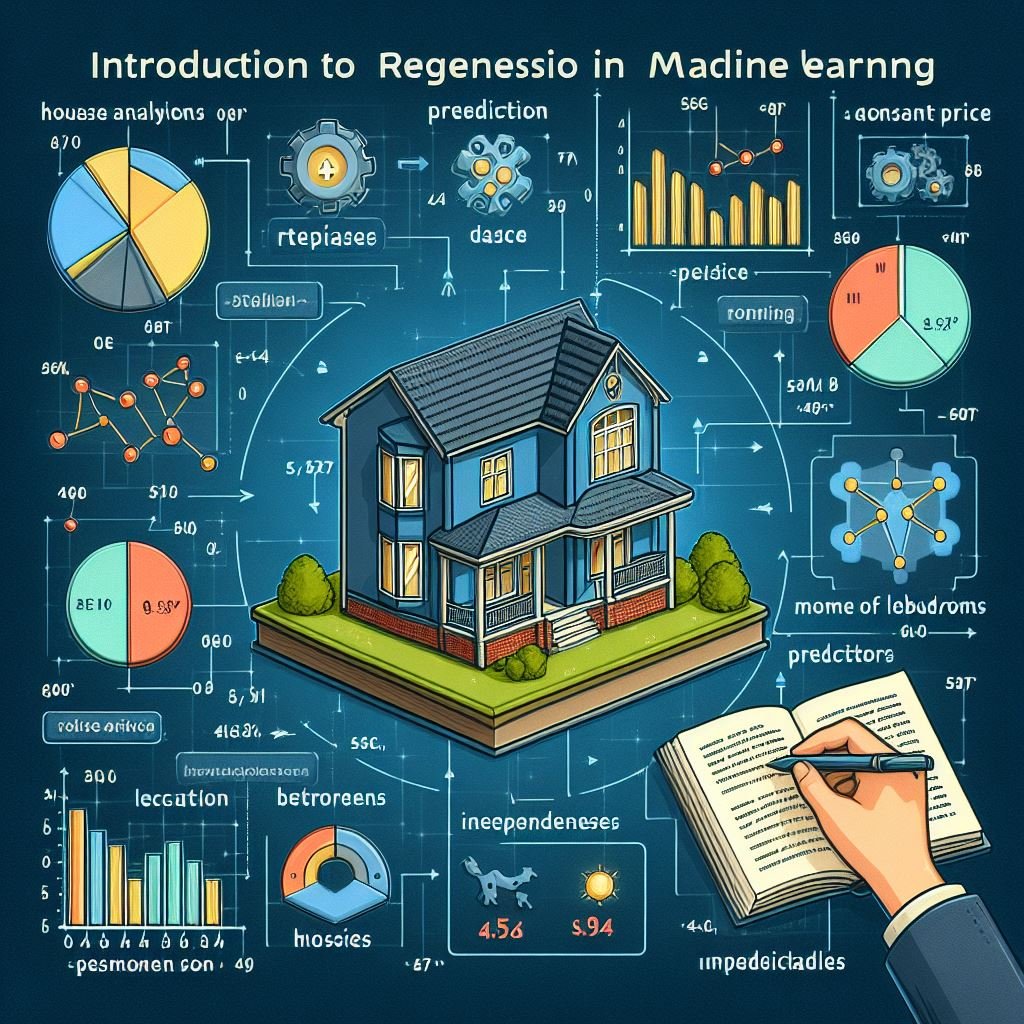Machine Learning Regression Models for Predicting House Sales Prices
Machine Learning Regression Models for Predicting House Sales Prices
Predicting the price of a house is a common problem in the real estate industry, offering significant benefits for both buyers and sellers by providing a fair market value of properties. With the advancement of machine learning techniques, it’s now possible to create more accurate and reliable prediction models. This article delves into the world of machine learning regression models for house sales price prediction, offering insights into the processes and methodologies involved.
Introduction to Regression in Machine Learning
Regression analysis in machine learning is a statistical method for predicting the relationship between a dependent variable (target) and one or more independent variables (predictors). In the context of house price prediction, the sale price of a house (dependent variable) can be predicted based on features such as size, location, number of bedrooms, etc. (independent variables).
Key Regression Models for House Price Prediction
Several regression models are popularly used for predicting house prices. We’ll explore some of the most effective ones:
- Linear Regression: Assumes a linear relationship between the dependent variable and independent variables.
- Polynomial Regression: Extends linear regression by adding polynomial features, allowing for a non-linear relationship.
- Ridge Regression: Addresses multicollinearity (independent variables being highly correlated) in linear regression by imposing a penalty on the size of coefficients.
- Lasso Regression: Similar to ridge regression but can reduce the number of variables upon which the given solution is dependent.
- Decision Trees and Random Forests: Non-linear models that use a tree-like model of decisions and their possible consequences.
Steps for Developing a House Price Prediction Model
- Data Collection: Gather data on house sales, including features and prices. The Kaggle House Prices: Advanced Regression Techniques competition provides a comprehensive dataset for this purpose. Kaggle House Prices Competition
- Data Preprocessing:
- Cleaning: Remove or fill missing values.
- Transformation: Convert non-numeric data into numeric.
- Feature Selection: Identify and select features that influence house prices.
- Model Selection: Choose one or more regression models to use based on the nature of your data.
- Training: Train your model using the training subset of your dataset.
- Evaluation: Validate the model’s performance using a separate subset of your data (validation set).
- Optimization: Fine-tune your model to improve accuracy, using techniques like cross-validation.
- Deployment: Deploy your model for real-world use.
Example: Linear Regression for House Price Prediction
An example provided by Towards Data Science showcases a step-by-step guide to predicting house prices using linear regression. This example offers a practical approach to understanding the nuances of model development, including data preprocessing, model training, and evaluation. Predicting House Prices with Linear Regression
Table: Comparison of Regression Models
| Model | Pros | Cons |
|---|---|---|
| Linear Regression | Simple, easy to interpret | Assumes linear relationship, sensitive to outliers |
| Polynomial Regression | Captures non-linear relationships | Can lead to overfitting if not careful |
| Ridge Regression | Reduces multicollinearity, prevents overfitting | Selection of regularization parameter required |
| Lasso Regression | Can select important features, prevents overfitting | Selection of regularization parameter required |
| Decision Trees | Handles non-linear data, easy to interpret | Can easily overfit, sensitive to data changes |
| Random Forests | Reduces overfitting of decision trees, handles non-linear data | More complex, requires more computational power |
FAQs
Q: Can these models predict the exact future price of a house?
A: While these models can provide accurate estimates, the prediction is not exact due to the dynamic nature of the real estate market and unforeseen factors.
Q: How often should the model be updated?
A: Regular updates are necessary to incorporate new data and reflect changes in the market. The frequency can depend on market volatility and the availability of new data.
Q: Are there any limitations to these models?
A: Yes, factors such as data quality, the complexity of the housing market, and the selection of features can affect model accuracy.
Conclusion
Machine learning regression models offer powerful tools for predicting house sales prices, leveraging vast amounts of data to provide accurate estimates. By understanding the strengths and limitations of different models, developers can choose the most appropriate approach for their specific needs. As the field of machine learning continues to evolve, these models will become even more sophisticated, further enhancing their utility in the real estate market.
Remember, the journey from data collection to model deployment is iterative and requires continuous refinement to achieve the best results. Whether you’re a seasoned data scientist or a real estate professional looking to dive into the world of machine learning, the resources and methodologies outlined in this article provide a solid foundation for developing effective house price prediction models.









good job